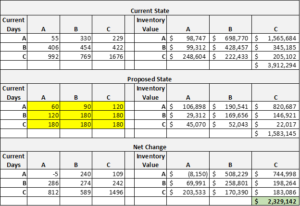 With over 30 years of experience, Perry Hall, an expert in Operational Excellence, including facility layouts, has helped many of The ProAction Group’s clients improve manufacturing efficiency and facilitate continuous improvement. Perry’s expertise is often leveraged when businesses are building, re-configuring or consolidating facilities. He designs optimized layouts with project plans for implementation, and he often works with clients through plan execution.
With over 30 years of experience, Perry Hall, an expert in Operational Excellence, including facility layouts, has helped many of The ProAction Group’s clients improve manufacturing efficiency and facilitate continuous improvement. Perry’s expertise is often leveraged when businesses are building, re-configuring or consolidating facilities. He designs optimized layouts with project plans for implementation, and he often works with clients through plan execution.
From automobiles to shampoo, Perry’s manufacturing experience is vast. One ProAction Group client, a haircare company, manufactured their own private label products as well as those of other brands. The business did not have a strong understanding of their capacity and felt there were opportunities to improve efficiency. Perry broke the various jobs into families (shampoo, conditioner, etc.), considered orders and variables such as product viscosity, and designed a new scheduling plan. He was able to redo the company’s standards so that they understood what they should be accomplishing each day. He also implemented The ProAction Group’s process of “Manufacturing for Daily Improvement,” and the financial improvements his work generated enabled the company to command a premium price when they were sold.
Another ProAction Group client manufactures blister packs for medications. Their employees were always working overtime, and still, customer orders were often late. Perry leveraged ProAction’s “9-Box Insights” to identify optimization opportunities. He created an index for equipment availability, and with better planning and sequencing, the company was able to service customers on-time and dramatically reduce their second shift labor hours.
Perry has numerous best-practices to share when it comes to plant-layout and manufacturing. He encourages businesses to think beyond the widget-making and consider how materials will flow into and out of facilities. What floor space may be needed for batch manufacturing? How will materials be delivered to assemblers?
Throughout his career, Perry has lent his consulting expertise to the portfolio companies of Private Equity firms and many mid-size and Fortune500 manufactures. Next month Perry celebrates his 10th year working with The ProAction Group. Click here to engage with Perry or other experts at The ProAction Group.










